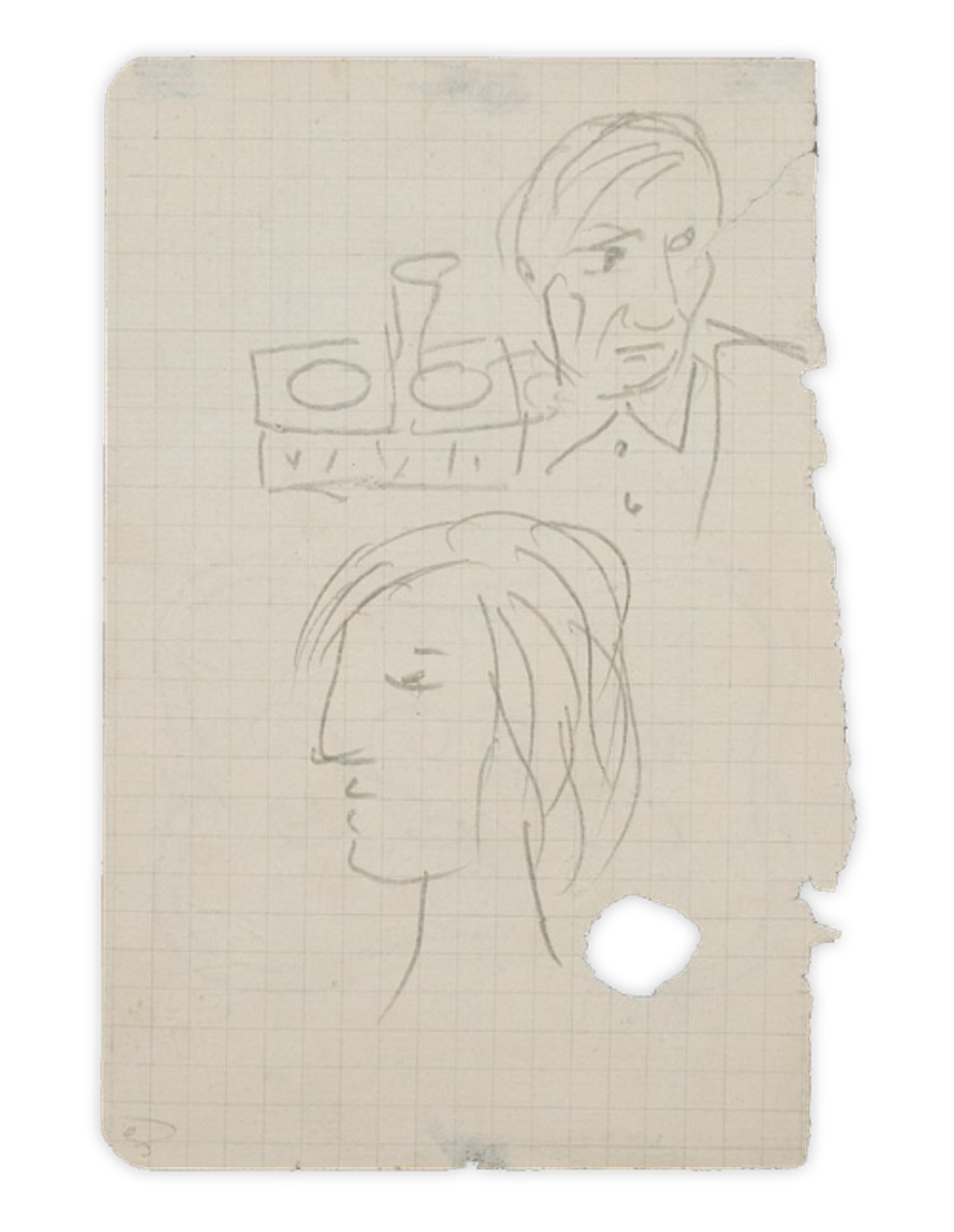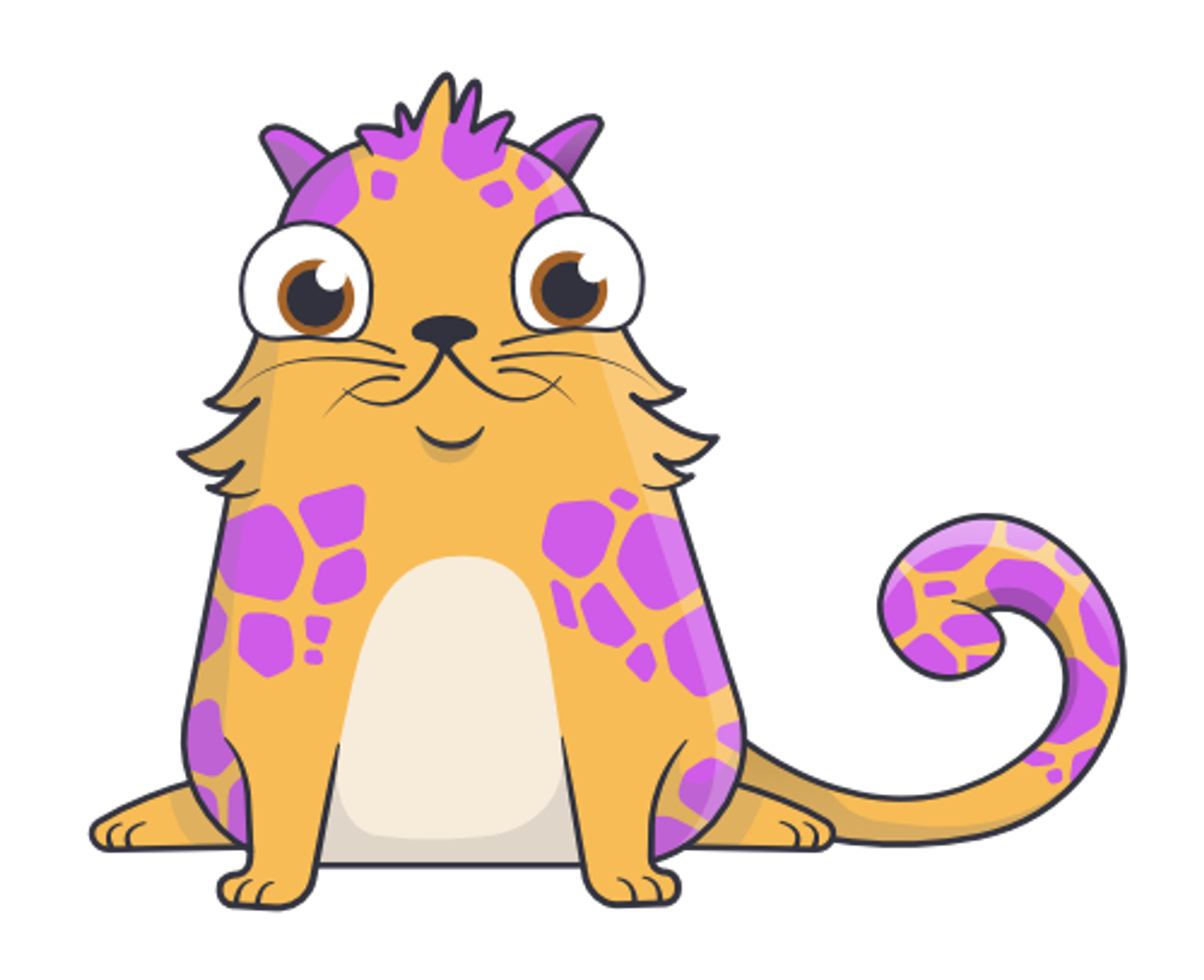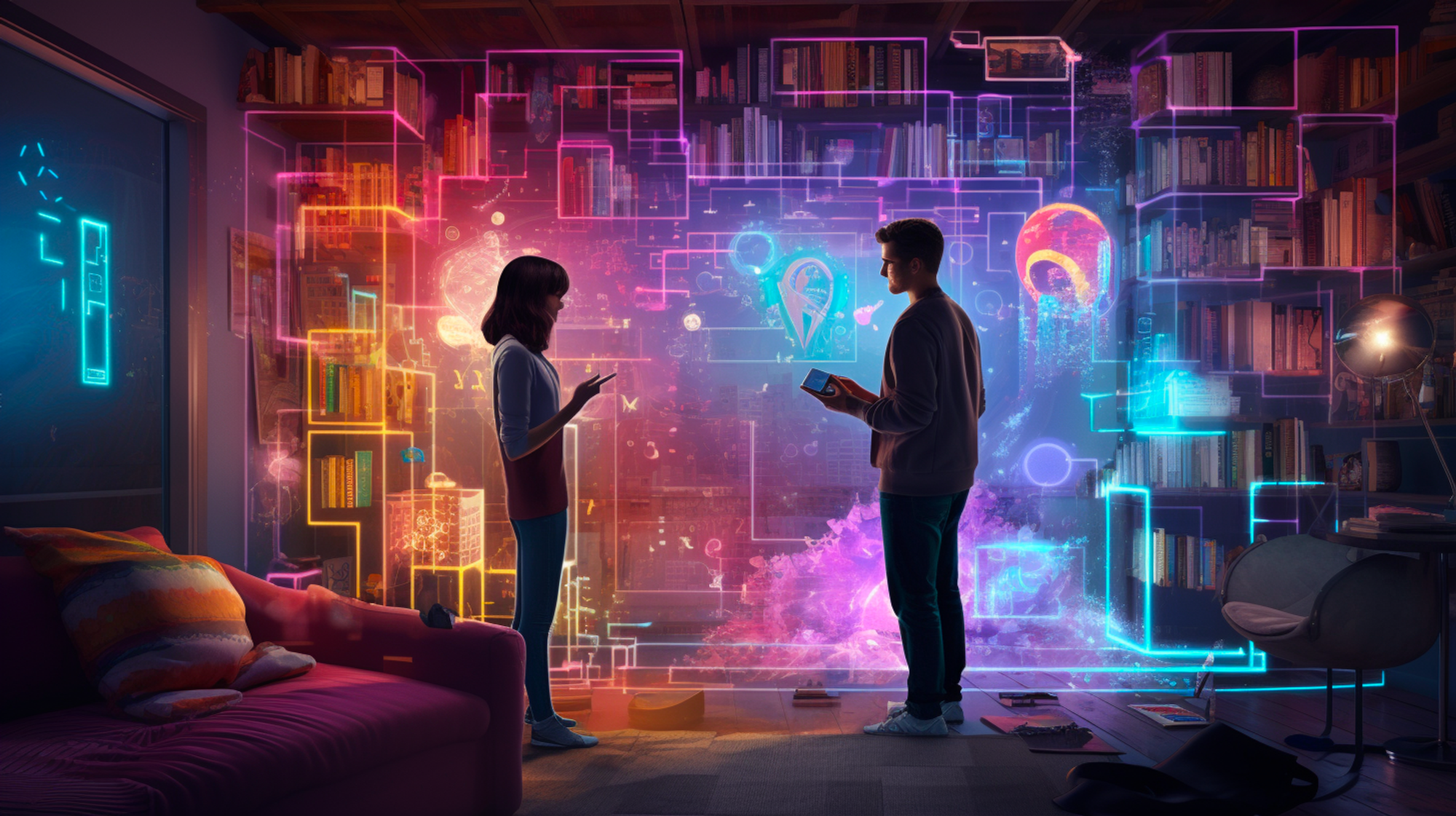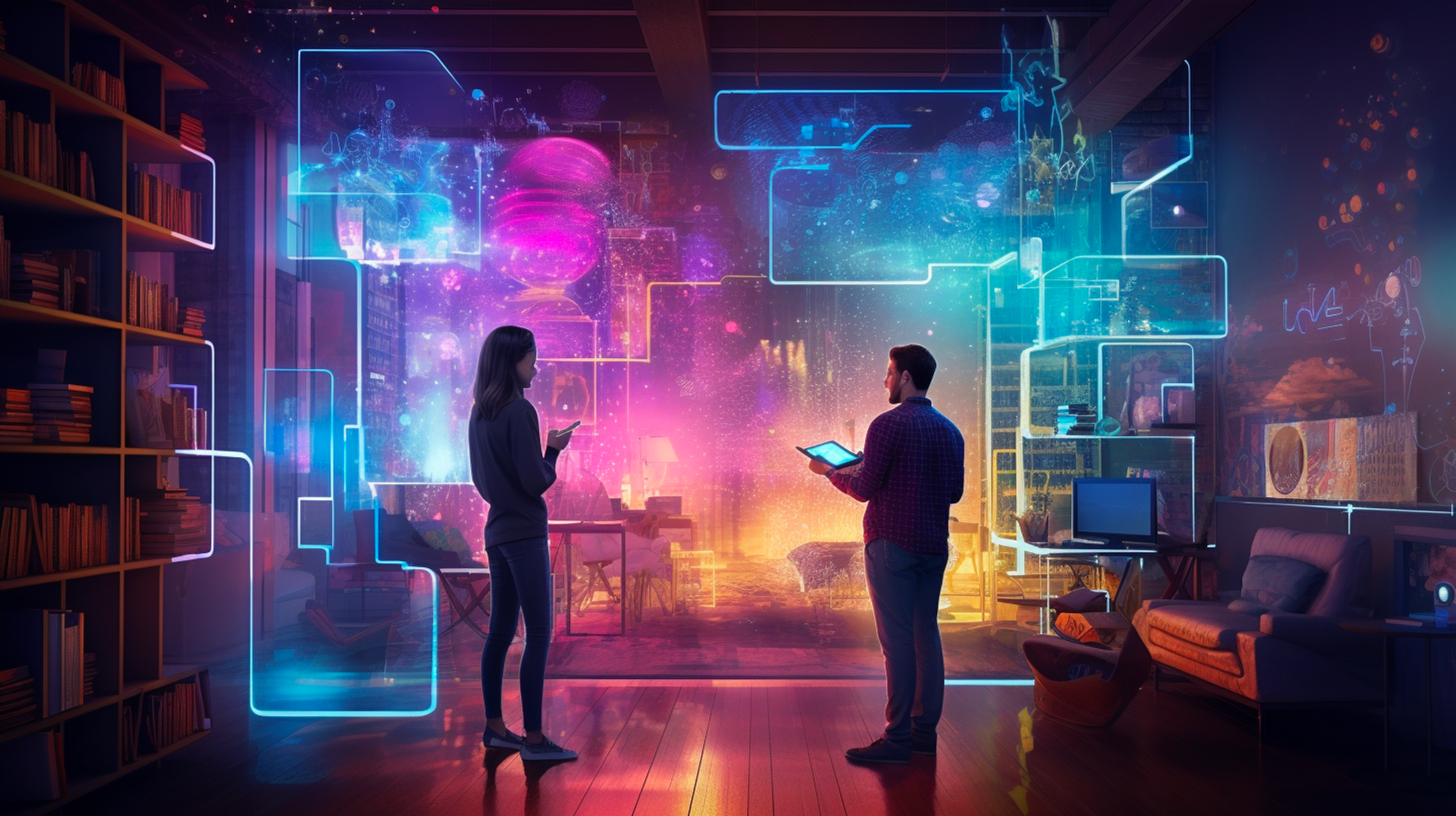On the Value and Purpose of NFTs
date
May 26, 2022
type
Post
year
slug
value-and-purpose-of-nfts
status
Published
tags
NFT
Art
Mixed Reality
summary
Is it all for nothing? Is it going to be idiotic shovelware from here on to eternity?
The market is being flooded with NFTs and there will be a lot of sad faces amongst the people buying them. - That much is for sure!

But artists have always produced works of art. The overall amount of artworks has always been increasing. Some have risen to become immensely valuable - most have not.
What’s different now with NFTs? And maybe more importantly: what’s the same?
How art is valued
Let’s take a step back and evaluate how traditional art is valued. Art — like any kind of good — is usually priced according to what people are willing to pay for it. Have a look at this pencil sketch by Pablo Picasso:

The material value of this quick sketch (”Self Portrait with Marie-Therese Walter”) is around 3 cents, yet it has previously sold for $11,375.00.
The real value has nothing all to do with the material value, instead it derives from the cultural significance of the artist and/or the artwork as well as the narrative behind it. The quality of the artwork itself takes a back seat.
Take a moment of introspection and ask yourself: Why would you want to own an original Picasso? Humans yearn to associate themselves with culturally significant people and events. And that’s why many of us would rather spend $10k on this doodle than spend $10k on a visually more pleasing artwork by an unknown artist.
What about NFTs?
There are very few established artists in the NFT space, so how would you decide which NFT to buy?
How do galleries and collectors traditionally select which artists to feature and buy from? — They pick the ones that show the most promise of reaching cultural significance — be that talent, vision, personality, drive, prominence, or a mix of all these and other factors. The path to greatness is usually a mix of talent, inventiveness and networking.
Again, the same is true for the NFT space. The highest valued NFTs are the ones that played a pioneering role. Cryptokitties paved the way, CryptoPunks were the first to create a trait-based autogenerated collection and Bored Ape Yacht Club perfected that formula with an attractive theme, pleasing visuals and special perks for owners.

If you want to make a good investment, you need to look for projects that innovate or significantly improve upon what’s working well.
Where does the NFT market go from here?
Is it going to be collectible shovel-ware all the way to eternity?
99.9% of all the people buying into all the collectible shovel-ware that is being pushed onto the market right now will end up with sad faces. Art is always about innovation — more of the same is usually not what works.
So what about the traditional art sector? They’re slowly mobilising to jump on board. The Belvedere in Vienna has just divided a high-resolution scan of the central piece of its collection — Gustav Klimt’s “The Kiss” — into 100x100 squares and minted it into 10,000 NFTs. This project has a lot going for it: It’s the first of its kind, it’s legitimately based on one of the most famous paintings of the 20th century and backed by an institution of immense cultural importance.
But at the same time it’s also a bad example because despite all the name-dropping, you essentially just pay a lot of money and then really own nothing of value. You don’t own a piece of the original artwork (that would be an entirely different story!), the original artist is not involved in any way (because long dead) - all you own is a tiny section of a big JPEG and you get a few minor ownership perks. (Believe me, there are cheaper ways to get an annual pass to the Belvedere)

The age of digital artists
So who are NFTs good for? They haven’t done much for the art world in general, they’re not doing a lot for most customers, so… Are they at least good for digital artists?
Digital artists never had a good way of displaying and selling their works in the physical world beyond printed posters. (Yes, we could have been paying digital artists all along, but being able to prove digital ownership seems to make all the difference for people’s willingness to pay for digital art — even if the work itself is often just a JPEG that’s easily copied.)
So yes, this could be good for artists, but people are only going to buy digital art if there’s a good way to integrate the art they buy into their everyday lives!
And that will happen over the next few years! A revolution is on the horizon. Mixed Reality glasses already enable us to exhibit virtual art in physical spaces!

As Mixed Reality glasses become available to (and affordable by) the general public and as we figure out how to lay a shared virtual layer upon reality (I dare not use the M-word as it’s been tainted and desecrated), it will enable us to replace much of our physical possessions with purely digital objects.
The only thing you will still need in your house are a bed, a couch and a kitchen. Maybe a bathroom. But everything else can be virtual: Decorations, bookshelves, plants and — yes, of course — works of art.

Spatial/sculptural art can take center stage in our lives. Paintings can come alive, we can place giant complex sculptures in our backyards or line the living-room walls with life-sized statues of our favorite video game characters. Personally, I’m looking forward to having a miniature version of the Pixies perform songs on my couch table, but your tastes may differ.
And most of those virtual possessions could be tied to NFTs, to allow for free exchange and resale. This shared virtual layer will enable a friend to come visit your house and see your virtual decorations. You’ll be able to switch your room into different modes: social gathering, gaming, work, music — whatever you’re currently doing, the virtual part of your house will adapt to it.
And suddenly virtual art and digital ownership make sense
Until now it didn’t make a lot of sense to buy digital art, because what were you going to do with it? Use it as a twitter profile picture? 🙄
The way you decorate your room, the books you have on your shelf, the posters you hang on your walls — those are all ways of projecting your interests and personality into your surroundings. You bring people over and they connect with you as a person via the things you put on display. You put weight behind certain interests by investing more (money, time or effort) into related items. Maybe you own a rare first edition vinyl of your all-time favorite album, or a hardbound special edition of your favorite book. CDs and books have been replaced by Spotify and Kindle and thus disappeared from our lives, but all of this can now return back into our houses in virtual form. And that’s exactly why digital ownership and certifiable rarity are going to be an integral part of the future.
We’re social animals, we want to be in the same space together. Bringing the digital into physical spaces — that’s the real draw of Mixed Reality and the real killer application for NFTs.

This is an updated version of an article I originally published on Medium here